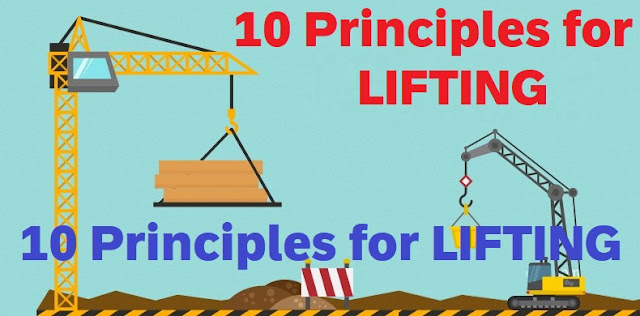Ten Principles for Lifting
Scaffolding PTW Permit To Work (PTW) Template Sample
Categorizing the lifting, All
lifting operations are categorised by the Person in Charge to reflect the risk
of the lift. This then defines the required controlling documents and the
competence of the employees involved in the lifting activity.
Training & Competency requirements
- All employees involved in planning, performing, lifting and maintaining
lifting equipment are trained and assessed as competent for their role.
Competence is assured through relevant experience, initial and refresher
training, and periodic assessments.
Responsibilities of each roles - One
person in the lift crew is designated as the Person In Charge of the lifting
operation. All personnel involved in the lifting operation have their
individual responsibilities clearly defined and communicated prior to
commencement of the lifting operation.
Risk Assessment & Lift Plan - A
risk assessment is required for every lift, regardless of category. A lift plan
is required for every lift, with the level of detail required defined by the
category of lift. A Permit to Work may also be required subject to lift
complexity and company policy.
Competent Person - An approved
competent person (Lifting Technical Authority, Advisor, Engineer or Subject Matter
Expert) is engaged in assuring that all lifting operations are correctly
planned and managed.
A Red Zone is established. All
non-authorised personnel are restricted from entering the Red Zone1, and all
personnel are kept clear of suspended/travelling loads and lifting equipment or
between the load and any heavy immovable object. Hard barricading to be
provided.
Periodic Inspection - Lifting
Equipment is thoroughly examined on a regular basis by an inspector who is
sufficiently independent from the on-site lifting crew, and who may be external
or an in-house appointee. The examination refers to an acknowledged Standard
for scope, methodology and acceptance/rejection criteria. All safety and
monitoring devices installed on lifting equipment are operational and not
by-passed or disabled. The employee doing inspection should be trained in all
aspects.
NOTE: Periods of inspections can be influenced by the nature and robustness of use and application as well as the environments of use.
Pre use Inspection - All lifting
equipment is visually inspected by a competent person before and after use.
Equipment integrity is maintained and faulty equipment is removed from serviced
and tagged as such. Inspection and maintenance activities are recorded in an
equipment register.
Periodic audits and inspections are
conducted by an Approved Competent Person by the respective country local
authorities.
Rescue Plan - Any Lifting of
personnel is classified to the category requiring the highest level of controls
and a rescue plan is included as part of the Lift Plan. Any equipment used for
lifting personnel is certified for the specific activity and used according to
recognised international standards.





No comments:
Post a Comment